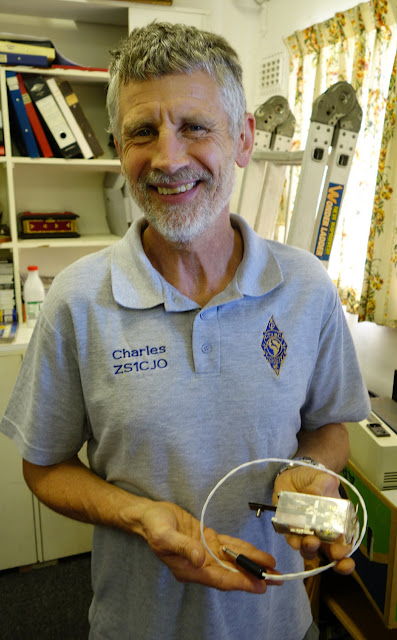A number of club members brought along various bits and pieces to our October monthly meeting at the clubhouse, ranging from components and chassis to entire rigs. These items sat smugly in the clubhouse for the duration of the meeting, at the conclusion of which certain items were happily claimed and paid for by those who had been eyeing them throughout John /ZS1PB's very interesting talk.
I saw Tony / ZS1TK walking away with a fine Icom R71 receiver, Jaques / ZS1JPB toting some fine Phillips antique gear. Charles / ZS1CJO was hugely pleased to acquire a very nice little bug key. Even Nick / ZS1ZD managed to find space in his shack for a couple of solid metallic speaker boxes.
But wait! There's more! Not every ham was able to sell everything immeadiately, and we are confident that these items may return on occasion to subsequent meetings. Furthermore, we know of at least two members who were planning to bring some stuff but couldn't make it to the meeting.
A request, please, for bringers of goods to PLEASE PUT THEIR NAMES ON THE EQUIPMENT so the prospective buyers know whom to ask and to pay the money to! Some wannabe buyers had to wander around the meeting holding items above their heads, asking to whom the goods belonged. Also, if it doesn't sell, PLEASE TAKE IT HOME AGAIN!
All in all, a very satisfying afternoon.
 |
| Hands-on investigations of rigs, handies, mikes and headphones |
 |
| Seriously vintage baekelite speakers and gear |
 |
| The smle says it all - Charles has caught the CW bug! |
 |
| This exquisitely retro piece of gear is as yet unclaimed... |
 |
| In the background, ZS1TK tests his R71 on the club's antenna. It performed!! |
 | ||
| Finally, to those who encounter Acquisition QRM from their significant others when they carry heavy boxes into their QTH, we offer this inspirational quote... |



























